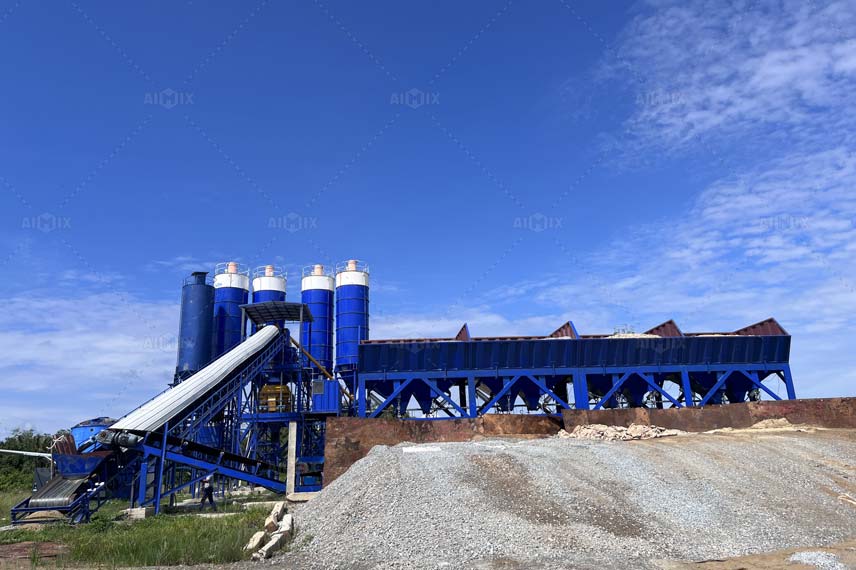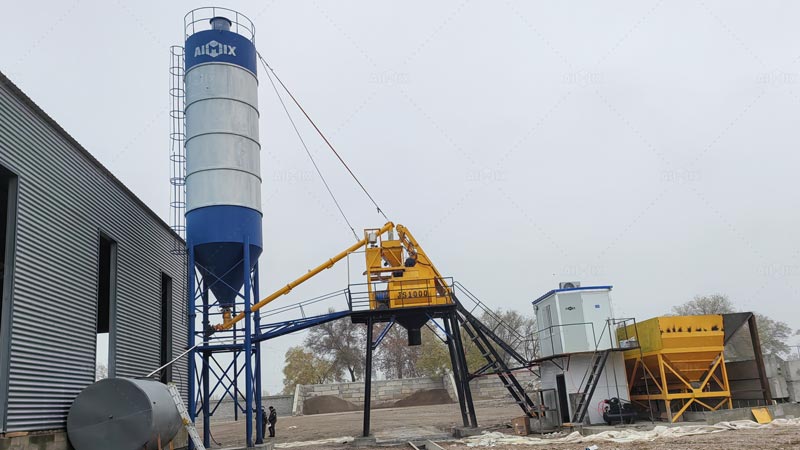Operating a concrete plant, whether it’s a mini concrete plant or a ready mix concrete plant, can involve significant ongoing expenses. From energy consumption to labor costs, these operational costs can add up quickly, affecting your bottom line. Fortunately, there are several strategies to reduce these costs without compromising the quality or efficiency of your operations. In this article, we’ll explore effective ways to save on concrete plant operating costs and make the most of your investment.
Optimizing Energy Consumption in Concrete Plants
Energy costs are one of the biggest contributors to the operating expenses of a concrete plant(planta de concreto precio). Concrete production involves heavy machinery and processes that require significant power. To minimize these costs, consider the following strategies:
1. Invest in Energy-Efficient Equipment
When purchasing or upgrading a concrete plant, focus on equipment that is energy-efficient. Modern concrete plants, including mini concrete plants, often come with energy-saving features such as variable-speed motors, automatic start/stop functions, and energy-efficient lighting. These features help reduce electricity consumption, especially during idle periods.
2. Regular Maintenance for Energy Efficiency
Routine maintenance of your equipment ensures that it runs efficiently. Poorly maintained machinery uses more energy to perform the same tasks. Regular checks on motors, mixers, and other components will ensure optimal performance and reduce unnecessary energy usage.
3. Optimize Production Scheduling
Scheduling production during off-peak energy hours can help reduce electricity costs. Many utilities offer lower rates during certain times of the day. By aligning your plant’s operations with these hours, you can significantly lower energy expenses.

Reducing Material Wastage and Improving Efficiency
Wastage of raw materials such as cement, aggregates, and water can increase your operating costs significantly. Efficient use of these materials not only reduces costs but also improves environmental sustainability. Here are some strategies to minimize material wastage:
1. Use Accurate Batching Systems
Investing in advanced batching systems is a great way to improve the precision of your mix designs. A ready mix concrete plant(planta de concreto premezclado) with automated batching equipment ensures accurate measurement of each ingredient, which helps prevent overuse of materials and reduces waste.
2. Implement Quality Control Measures
Quality control is essential in ensuring that every batch meets the required specifications. By adhering to strict quality control processes, you can minimize errors and rework. This leads to less wastage of materials and better overall efficiency in production.
3. Recycle Concrete Waste
One of the most effective ways to reduce material costs is by recycling excess or leftover concrete. Many modern concrete plants allow for the collection and reuse of unused concrete. By setting up a system for recycling, you can reuse aggregates and other materials, which can save you money on purchasing fresh raw materials.
Maximizing Workforce Efficiency
Labor is another significant operational cost in concrete plants. Maximizing workforce efficiency through automation and better management practices can lead to considerable savings.
1. Invest in Automation
Automating certain aspects of the concrete production process can reduce labor costs and increase accuracy. For example, automation in mixing, batching, and even transportation of concrete can reduce the need for manual labor. A mini concrete plant(mini planta de concreto) with automated systems can help improve production rates and reduce human error, thereby saving on labor expenses.
2. Proper Training for Employees
Properly trained employees are more efficient and make fewer mistakes, which ultimately reduces costs. Investing in regular training programs ensures that your workforce can operate equipment effectively, troubleshoot problems quickly, and follow safety protocols, reducing downtime and accidents that could lead to extra expenses.
3. Preventive Maintenance to Reduce Downtime
Downtime due to equipment failure or breakdowns is costly. Implementing a preventive maintenance program can help detect issues early before they lead to major repairs or prolonged downtime. Regular inspections, lubrication, and parts replacement can keep your equipment running smoothly and reduce repair costs in the long run.
Choosing the Right Concrete Plant for Your Needs
When it comes to selecting a concrete plant, the price of the equipment itself is just one factor to consider. However, it’s also important to choose the right type of plant for your operational needs, as this can affect both efficiency and costs over time.
1. Mini Concrete Plants for Small Projects
If you’re working on smaller-scale projects or need flexibility, a mini concrete plant might be a more cost-effective option. These plants are typically less expensive to purchase and operate, especially in terms of energy and maintenance. Their compact design also makes them ideal for tight spaces and low-volume production, reducing overhead costs.
2. Ready Mix Concrete Plant for Large-Scale Operations
For larger-scale projects, a ready mix concrete plant is often the best option. These plants provide the ability to produce high volumes of concrete quickly and efficiently. However, it’s important to assess the concrete plant price and ensure the plant’s capacity matches your production needs. Over-investing in equipment that exceeds your production requirements can lead to unnecessary operating costs.
3. Consider Mobility for Flexibility
If your project sites are scattered or in remote locations, a mobile concrete plant might offer more flexibility. Mobile plants can be transported to different job sites, reducing transportation costs and allowing for on-site production. However, these plants can sometimes have higher operational costs due to their mobility, so it’s essential to weigh the benefits against the cost of transportation and setup.

Reducing Transportation Costs
Transportation costs are another significant factor when operating a concrete plant(planta concretera). Here are some ways to reduce those expenses:
1. Optimize Delivery Routes
Using software to plan and optimize delivery routes can reduce fuel consumption and delivery times. By minimizing the distance traveled and reducing the number of trips, you can lower your transportation costs significantly.
2. Invest in Larger Concrete Mixers
Investing in larger concrete mixers allows you to reduce the number of trips needed to transport concrete to the job site. This saves on fuel and labor costs and ensures that you meet deadlines more efficiently.
Conclusion
Saving on concrete plant operating costs involves a combination of smart equipment choices, energy-efficient practices, and effective management. By investing in automation, optimizing energy use, and improving labor efficiency, you can reduce overhead costs and increase profitability. Whether you’re working with a mini concrete plant or a large ready mix concrete plant, these strategies can help maximize the return on your investment and ensure the smooth operation of your plant for years to come.